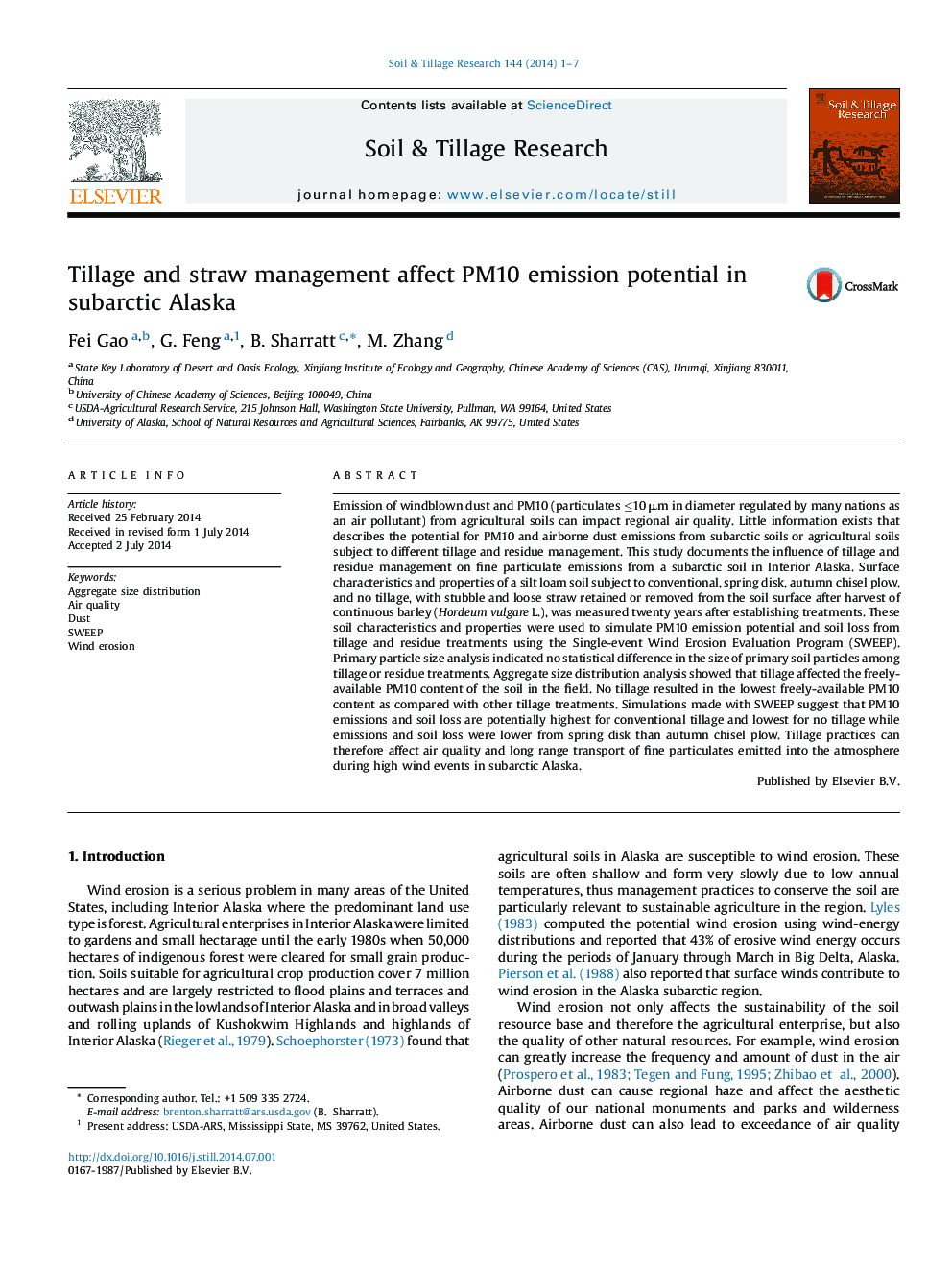| Article ID | Journal | Published Year | Pages | File Type |
|---|---|---|---|---|
| 305660 | Soil and Tillage Research | 2014 | 7 Pages |
•Tillage influenced aggregate size distribution and not particle size distribution.•Straw management appears to have some effect on soil PM10 content.•Simulations showed greater PM10 emissions for conventional versus conservation tillage practices.
Emission of windblown dust and PM10 (particulates ≤10 μm in diameter regulated by many nations as an air pollutant) from agricultural soils can impact regional air quality. Little information exists that describes the potential for PM10 and airborne dust emissions from subarctic soils or agricultural soils subject to different tillage and residue management. This study documents the influence of tillage and residue management on fine particulate emissions from a subarctic soil in Interior Alaska. Surface characteristics and properties of a silt loam soil subject to conventional, spring disk, autumn chisel plow, and no tillage, with stubble and loose straw retained or removed from the soil surface after harvest of continuous barley (Hordeum vulgare L.), was measured twenty years after establishing treatments. These soil characteristics and properties were used to simulate PM10 emission potential and soil loss from tillage and residue treatments using the Single-event Wind Erosion Evaluation Program (SWEEP). Primary particle size analysis indicated no statistical difference in the size of primary soil particles among tillage or residue treatments. Aggregate size distribution analysis showed that tillage affected the freely-available PM10 content of the soil in the field. No tillage resulted in the lowest freely-available PM10 content as compared with other tillage treatments. Simulations made with SWEEP suggest that PM10 emissions and soil loss are potentially highest for conventional tillage and lowest for no tillage while emissions and soil loss were lower from spring disk than autumn chisel plow. Tillage practices can therefore affect air quality and long range transport of fine particulates emitted into the atmosphere during high wind events in subarctic Alaska.
